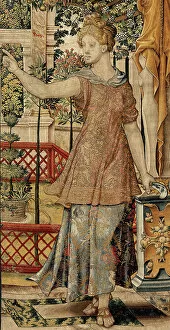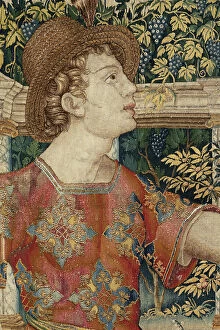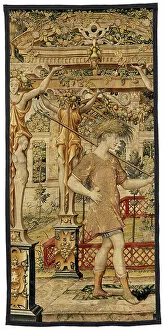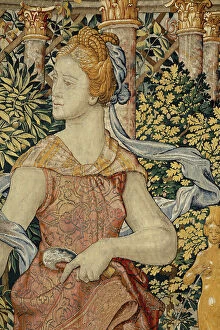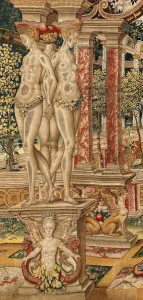Publius Ovidius Naso 43 Bc 18 Collection
"Publius Ovidius Naso: A Tale of Transformation and Love" In the year 43 BC, a remarkable poet named Publius Ovidius Naso was born
All Professionally Made to Order for Quick Shipping
"Publius Ovidius Naso: A Tale of Transformation and Love" In the year 43 BC, a remarkable poet named Publius Ovidius Naso was born. Little did he know that his words would transcend time and captivate generations to come. Ovid, as he is commonly known, became one of the most influential figures in Roman literature. One of his notable works was the tale of Vertumnus and Pomona, a story filled with enchantment and passion. This narrative inspired artists throughout history to depict their love in various forms. In c. 1550, an exquisite piece called "Vertumnus transformed into a farmer" emerged from skilled hands using gold, wool, and silk. The intricate details showcased Vertumnus' metamorphosis into a humble cultivator who sought to win over Pomona's heart through hard work and dedication. Another rendition portrayed Vertumnus as a fisherman; again crafted meticulously with golden threads interwoven with soft wool and luxurious silk fibers. This depiction symbolized his ability to adapt for love's sake - casting aside his previous form to become what Pomona desired. A third masterpiece depicted Vertumnus as a pruner - delicately trimming branches while adorned in opulent materials such as gold, wool, and silk. This portrayal emphasized the importance of nurturing relationships by removing unnecessary obstacles that hinder growth. The tapestry created around ca. 1550 brought forth yet another transformation where Vertumnus returned to being a farmer once more – showcasing how love can lead us back to our roots even after we have changed paths. These artistic interpretations not only captured the essence of Ovid's tale but also served as reminders that true love knows no bounds or limitations. Publius Ovidius Naso left behind an enduring legacy through his writings which continue to inspire artists across centuries. His stories remind us that love has the power to transform us into versions we never thought possible, just like Vertumnus' ever-changing forms.

